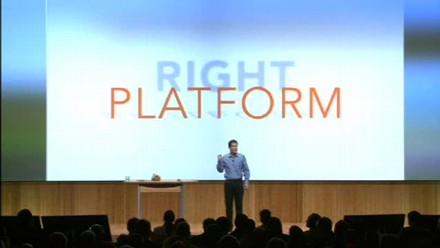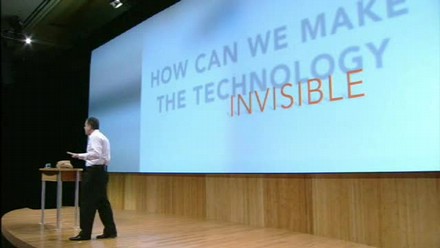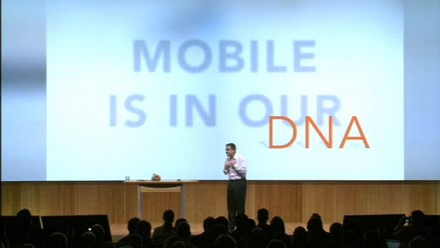David Beers has been a Commenter at Palm Infocenter for several years and has usually been the butt of ridicule and scorn from those who chose to ignore his foresight. (Granted, those were during the days when Palm wasn’t doing anything right, bleeding money like a shot-up body, and abandoning PDAs.)
He seems to have nailed the secrets of the Pre and its possible destiny pretty well in three detailed and enlightening posts on his blog:
Palm webOS applications are not “web apps”
First of all, a web application runs in a browser, which is a piece of software that’s optimized first and foremost for making requests to a server on the Internet and rendering the responses as a web page. Browsers have gradually been twisted or tortured with plugins to playback media, use cookies as local databases, and integrate with other apps on the machine, but to operate reliably and safely on the Internet they’re necessarily somewhat crippled in using features of the system or hardware. Just because Palm said that webOS apps can be written with HTML, CSS and JavaScript doesn’t mean they run in a browser or have the limitations of a web browser. Those are technologies for rendering a GUI that can — and have been — used outside the confines of the browser, and Palm is doing just that.
I was one of the first people to state that I believed Palm was doing nothing more than iPhone-like web apps.
But a nagging doubt kept gnawing at me. I couldn’t see Elevation Partners putting up near a half a billion dollars of investment capital for something so … weak.
Plus, Jon Rubinstein is not about to head a company that would in any way become an embarrassment to him. He could have stayed in Mexico and been very happy.

So I had to ditch the “iPhone web apps” idea pretty quickly and wonder just what exactly was going on here. I knew there was … something.
And then along came Beers with this second post:
Is that a Java application server running on your Palm Pre?
First, at least as far as the application framework is concerned, the software on a Pre looks an awful lot like a Linux web server and nothing at all like Android, ALP or any other Linux-based mobile platform we’ve seen. Second, the server code that is running in the development environment is Jetty, which is Java. That makes sense from the standpoint of enabling developers to use Mac or Windows workstations but maybe there’s a native C/C++ server running on the actual device. I doubt it. I say there’s a Java app server running on the phone, too, inside a nice Java runtime. Why?
Well first, why not? Java is secure, stable, runs on all kinds of processors and OSes, including x86 PCs and Macs and a billion or so mobile phones. Palm didn’t have time to mess around with porting or reinventing the wheel. Second, as I pointed out back in Sept ’07 when the Foleo was cancelled, Palm was hiring Java engineers[.]
This column is the first hint that Palm has really done Something Different.
Rubinstein tried to get that across at the CES unveiling, when he said:

[Y]ou need to have the right platform. One that’s forward-looking — not based on yesterday’s operating system.
Beers also points out this:
I have a suspicion that a Java runtime is lurking in there somewhere and Palm didn’t want to mention it yet for fear of comments about Palm being “late to the mobile Java party.” J2ME, Danger, RIM, Android, JavaFX, Sprint Titan… the advance of mobile Java may be exciting for mobile Java developers but to everyone else a new Java SDK sounds warmed over, and Palm’s had enough of that kind of talk.
Which makes an ironic underscore to this screensnap:

Beers has a good point. Given the … less than satisfying … examples of Java programs I have had the misfortune to encounter, emphasizing anything to do with Java as a core part of the OS would have been prejudicial, to say the least.
In his third post, Beers makes some audacious yet convincing claims for the possible future of Palm and webOS, in How Palm will storm the desktop with webOS
[. . .] Palm has put themselves in an astonishing strategic position that I’m surprised no one is talking about. By building a system using de facto cross-platform standards like JavaScript, WebKit, Java and Jetty, Palm has made a great platform for creating companion applications that can run on any desktop — Windows, Mac, or Linux — leveraging the same code that runs on the handset. You won’t see Apple being able to deliver iPhone applications to the desktop like that any time soon, at least not for the 90% of personal computer users that don’t own Macs.
If that’s not revolutionary enough, consider this shocker:
Making a desktop version of a webOS application might involve no additional coding at all, just some care to follow certain design guidelines.
And here is where things really become fun:
They would also want to integrate their application store in the desktop companion app, since the desktop is clearly the easiest and most engaging way to search for and try out applications. Letting application shoppers try an application in a simulated Pre phone launched from the desktop app would be a great way to break down the natural resistance to trying something new. I also believe there are opportunities to make installation of the application to the phone slicker and smoother than we’ve seen on other platforms using a desktop companion app like this.
I had planned to do a post about the upcoming App Catalog before I saw this post by Beers. He’s stolen some of my thunder here.
Consider this:
What a spectacle it would be to see Palm show up out of nowhere as one of the players in the hotly contested cloud computing arena. And not just to show, but to conquer a niche because their AJAX APIs expose unique messaging, location, even voice and camera functions on the mobile that only their position as a mobile software/hardware integrator makes possible!
Which really makes, I’d say, a red-lined triple underscore for this screensnap:

I want to conclude this with Beers’ words from his first post:
If you watched any of the announcement you know that webOS is also intended for delivering a cutting edge web app experience, but that has to do with the browser they developed. It should also be clear that applications originally written for the web using JS/HTML/CSS (like GMail, BaseCamp, Facebook, etc.) should be easy to port to webOS and be enhanced to run in offline mode, due to webOS’s HTML 5 support for offline databases.
All this starts to blur the distinction between “web apps” and “local apps,” and that’s where I think we’re going with the mobile web.
That doesn’t sound particularly thrilling, really, unless you’ve been given a new understanding of what that exactly means. I’ve had such a glimpse and that will be the topic of a future post.
Although nothing is yet entirely crystal clear to me, the haze is getting less thick and I’m becoming more excited by the Pre with each day!
He’s not the first to have said this, though Beers is always more technical with his explainations.
Comment by arjwright — January 24, 2009 @ 8:09 am |
Who said it first and where?
Comment by mikecane — January 24, 2009 @ 11:25 am |
Mike, thanks for stopping by counternotions.com for the article, Strategic shortcomings of Pre in the post-iPhone era
http://counternotions.com/2009/01/12/pre/
While I won’t comment on the nature of WebOS at this point, I would like to question the very notion of mobile apps that run on desktops too. For Palm’s sake, I hope they re-consider that.
With the iPhone UI, we finally get to see that a mobile device deserves a much different interface paradigm than a desktop, not just visually but more importantly in terms of app flow.
Single screens, quick entry/exit, drastically reduced data visibility for better cognition, restricted utility, efficient and often one-task apps, sensor-coupled discovery via accelerometer/GPS/etc, and so on. Mobile apps are of a different breed.
If nothing else, the phenomenal success of the Apple App Store has amply demonstrated that write-once/run-everywhere is not a necessity, and may in fact be a liability.
Desktop requirements (networking, printing, storage, peripherals, drivers, audio/video cards, etc) are very different and onerous than mobile devices. WebOS has no prospects there.
Comment by Kontra — January 28, 2009 @ 12:16 am |
I linked to your other post here:
Of course anything on the desktop would be different. I can’t speak to what Palm might do — but the software the Foleo had was pretty slick in some respects (too bad the internal hardware was incredibly bad).
Comment by mikecane — January 28, 2009 @ 10:45 am |